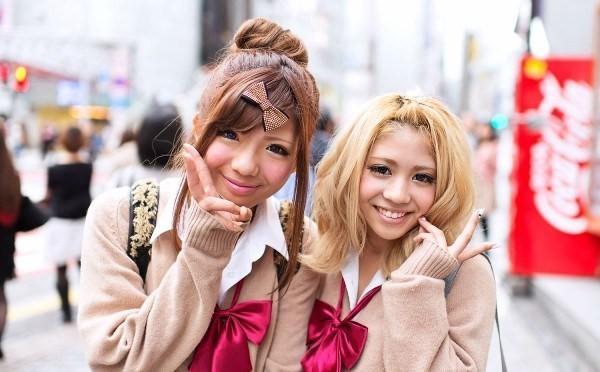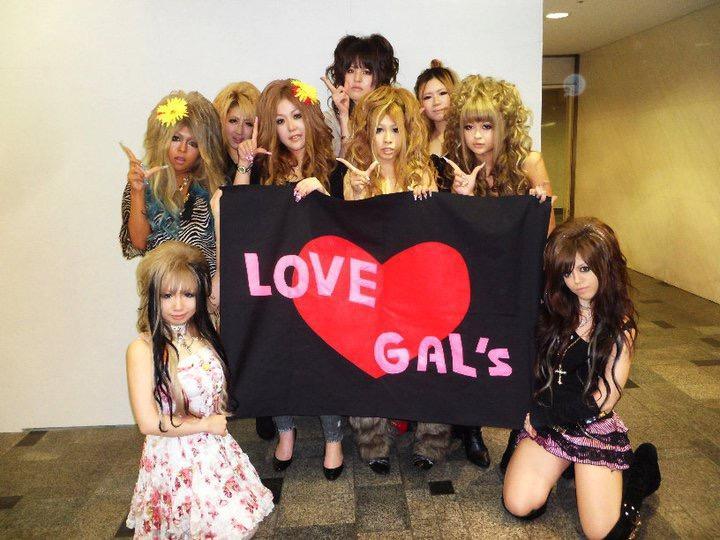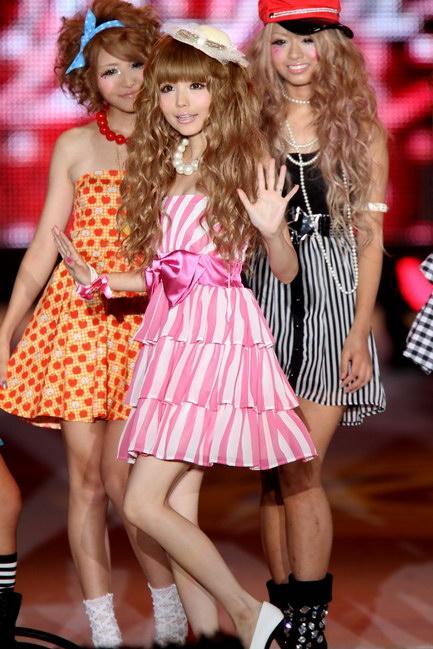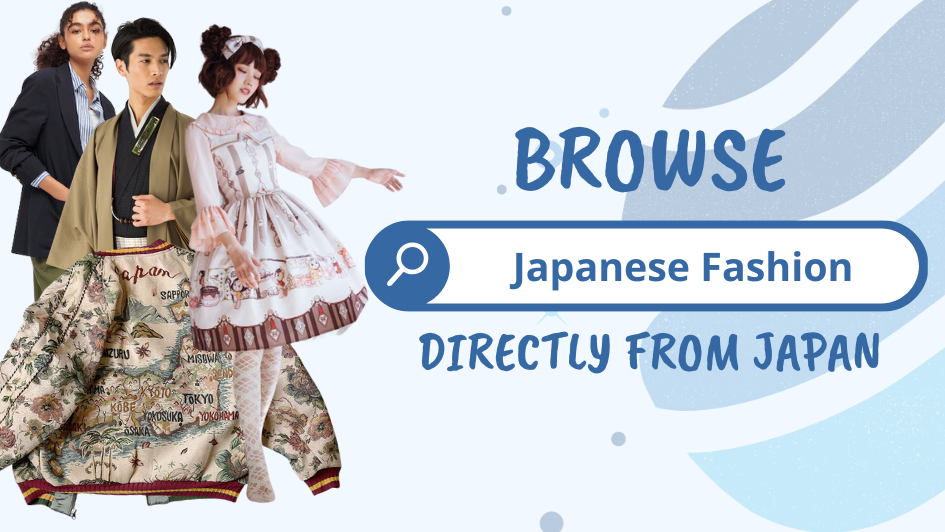If you are at least vaguely familiar with Japanese fashion, you have probably already heard of the gyaru style before (although the appearance of this Japanese fashion style has declined in recent years.)
Gyaru, from the word “gal,” is a term describing a fashion style in Japan which has seen many changes and evolutions, since the 1980s, when this term was coined. Generally, the term refers to girls with bleached hair, caked-on make-up, provocative clothing, and a matching attitude.
Unfortunately, lately, we’ve been seeing a lot less of these girls, but is gyaru dead? Not really. The style only transformed to a more toned-down, feminine look, with lighter skin and less dramatic makeup.
Read on to find out exactly what we mean by gyaru, its history, types of gyaru, stores where you can still find gyaru clothes, and the modern new twist!

Is Japanese Gal Fashion Dead?
Recently, the number of tanned young girls with colorful "gyaru" outfits has dropped completely.
Although the "gyaru" subculture has already been around for a few decades, its popularity has decreased significantly in the last 15 years. Both of their flagship magazines, egg, and Koakuma Ageha, shut down in 2014.
Though Koakuma Ageha resumed publication, egg seems to be present only on the internet. Egg recently appeared as an online-only magazine, more as a memorial of the gyaru fashion than an up-to-date style magazine.
Besides fashion, the models such as Natsumi Yoshida made these magazines popular. She was seen as the personification of "gyaru," but not anymore. Though she is still working in fashion, she’s done with her "gyaru" side.
Of course, as with all subcultures, "gyaru" had many different subgenres, such as "ganguro." These parts of the "gyaru" movement are almost impossible to find now. However, since Koakuma Ageha came back, we could say that "gyaru" hasn’t completely disappeared – they have only changed.
Gyaru, as it was known in the ‘90s, is now pretty much gone.
Today, girls who are called "gyaru" have adopted a more mainstream look, avoiding dark face makeup and going for a more natural look. The style has changed, and so have the preferences, so the followers of the style have turned to more contemporary looks.
Pale skin is now “in” and not the tan gyaru look. Instead of the crazy ganguro makeup and wild attitudes, girls have adopted a more “girly” approach to style, going for an ultra-feminine look instead.
So, if you are a fan of this style, don’t worry! It's not completely dead since gyaru still plays a role in Japan's modern fashion. There are still some places where girls who follow this fashion style exist.
If you ever find yourself in Shibuya, make sure to visit the Ganguro Café, a small café hosted by real gyaru girls who still wear the style every day.
You can even try out the “ganguro experience” package, where the gyaru girls give you a complete makeover, transforming you into a real ganguro yourself!
Even though the popularity of Gyaru as a lifestyle and fashion has declined since its peak in the early 2000s to late 2015, a small group of Gyaru is working towards increasing the popularity of the style and attempting to revive it.

What is Gyaru?
Gyaru is one of the biggest types of Japanese fashion subcultures.
The Japanese pronunciation of the word “gal,” gyaru, was popularized in the 70s and became a synonym for a fashionable girl in the 80s.
The first gyaru style to appear was the kogal in the mid-1990s. Young girls who wore school uniforms with knee-high socks had dyed hair and wore plenty of makeup.
The gyaru style has grown over time, and many subtypes have appeared, from hime gyaru to ganguro.
Although gyaru Japanese street fashion began in the 1970s, its popularity peaked in the 1990s and early 2000s. The style includes heavily dyed or bleached hair (typically from dark brown to blonde), dramatic makeup, and decorated nails.
The makeup usually consists of fake eyelashes and dark eyeliner intended to make the eyes look larger and face contouring for a slimming effect.
For gyaru fashion, the clothing pieces differ depending on which particular style the individual chooses.

Brief History of Gyaru
The gyaru subculture peaked between 1991 and 1993 under the influence of several other existing subcultures at the time.
In the early 1990s, people noticed high school girls with bleached hair, short uniform skirts, and tanned skin carrying around expensive designer bags while also wearing expensive clothes.
These girls would eventually be called kogyaru, the version of “gyaru” that is best known today.
As with most fashion subcultures, the gyaru movement started as a teenage rebellion.
However, unlike many of those subcultures (such as the punk movement), instead of arising from the oppressed, it was a rebellion against the traditional beauty ideals seen within the upper class.
Because of the strong materialistic focus of this fashion style, to be gyaru meant to have money, as girls had to be able to afford expensive brands of clothing.
As the style caught on, “gyaru” was broken down into more subtypes for less affluent girls, making it easier for girls of different social classes to participate.
Related Questions
Where can you buy gyaru clothes?
The "original" Gyaru is pretty much extinct, as most of the brands don’t exist anymore, so it is pretty hard to find brand items.
You can always search for a certain aesthetic, for example, “flower skirt,” to find items that could be considered gyaru.
Now you can buy directly from the brand stores themselves, but you will have to use a shopping service for this, which can add some more fees. Here are some of these stores:
- Taobao: The key place where you can get a replica gyaru brand for a piece of the price and where the material is often a bit better than the real thing.
- Black Queen - Rakuten is a Japanese website for which you also need a shopping service. This Rakuten shop, particularly Black Queen, is excellent for those who are into tsuyome and oraora styles.
Shop Black Queen Now!
What are the Gyaru subcultures?
There are many subcategories of "gal" fashion depending on the choice of clothing items. Here are some of them:
- Gyaru-kei: The default gyaru style.
- Ganguro: A gyaru with an artificial dark tan, light bleached hair, makeup which included white shadow around the eyes and on the lips, and darker eyeliner on the eyes. Also, decorations including glitter or flowers can be seen.
- Manba : Manba is even darker and wilder than ganguro.
- Hime-gyaru: One of the most expensive gyaru styles of dress as it is a must to buy the brand-name pieces such as 'Princess Melody' or 'MA*RS'. The style is greatly based on the Rococo era.
- Agejo: A style that was mostly inspired by the magazine Koakuma Ageha. It is a very ladylike, foxy, and mature style.
- Kogyaru: Typically a high school student style.
- Neo-gyaru: The term was coined for gyaru that wanted to bring back the style during its 2010s decline. It is more western-like and even resembles grunge fashion. The makeup included dark lipstick or eyeshadow.
Now that we’ve looked at all the different variations of the gyaru style, we are pretty confident it is not going anywhere any time soon.
Times change and style naturally evolves to keep up with contemporary fashion, but creativity in Japanese street fashion is still alive and well.

